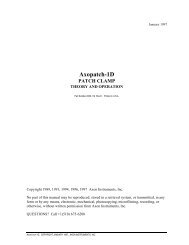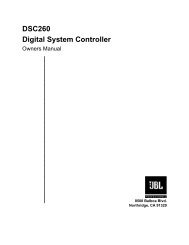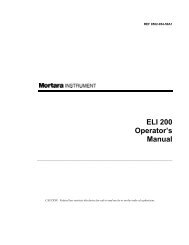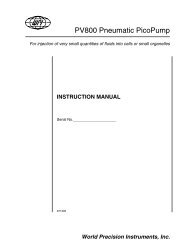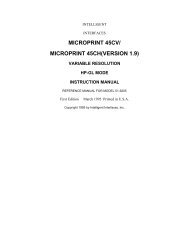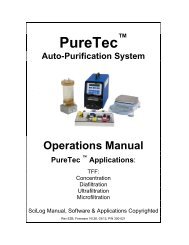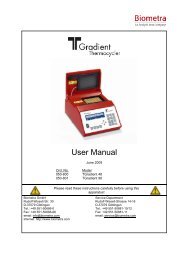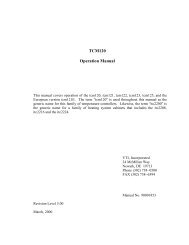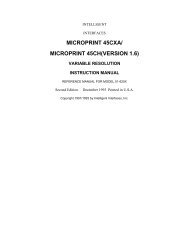Chromatotron
Chromatotron
Chromatotron
Create successful ePaper yourself
Turn your PDF publications into a flip-book with our unique Google optimized e-Paper software.
______THE CHROMATOTRON AND HOW IT WORKS<br />
INTRODUCTION<br />
The <strong>Chromatotron</strong> is a preparative, centrifugally accelerated, radial, thin- layer<br />
chromatograph. The apparently simple construction hides a wealth of novel<br />
design details that ensure good resolution and ease of operation. The parts of<br />
the <strong>Chromatotron</strong> are shown on pages 2 and 3.<br />
Chromatography is performed in a thin layer of sorbent A on a rotor B. The<br />
motor F drives the rotor at a constant speed by a shaft passing through a hole<br />
in the center of the main vessel D.<br />
Solutions of samples to be separated are delivered to the rotor via the inlet I<br />
and wick J. Elution by solvent forms concentric bands of separated<br />
substances which leave the edge of the rotor together with solvent. Channel E<br />
collects the eluate and brings it to the output tube G.<br />
Teflon lid C is transparent to UV light, allowing detection of UV absorbing<br />
bands. Eight retaining clips H hold the Teflon lid on the main vessel.<br />
A pump (not supplied) can be used to recycle the output to the input or to<br />
connect <strong>Chromatotron</strong>s in series. Multiple development can be performed.<br />
The <strong>Chromatotron</strong> was designed for preparative separations on silica gel and<br />
alumina. It is not useful for chromatography requiring cellulose or reversed<br />
phase sorbents.<br />
1



